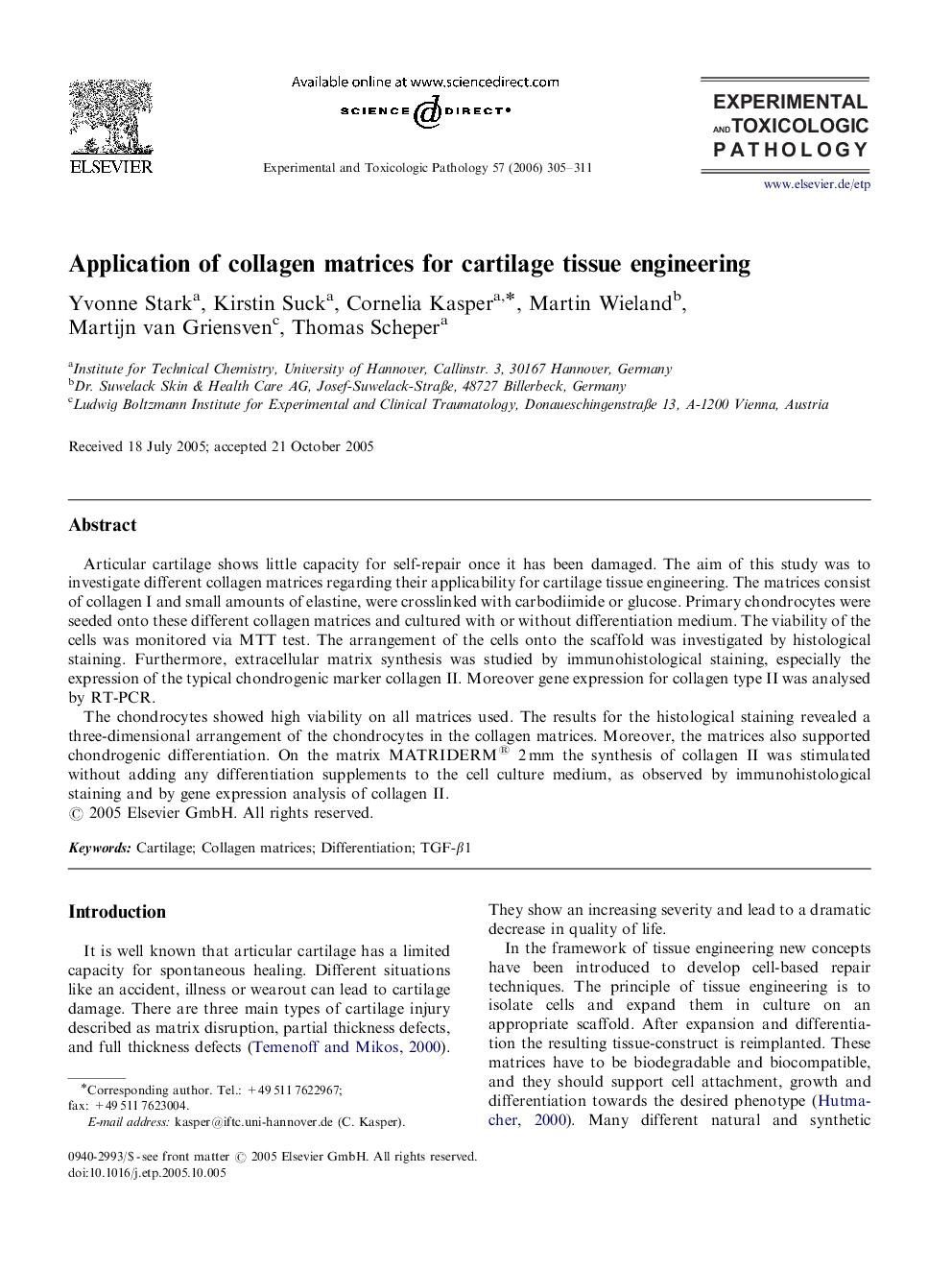| Article ID | Journal | Published Year | Pages | File Type |
|---|---|---|---|---|
| 2499554 | Experimental and Toxicologic Pathology | 2006 | 7 Pages |
Articular cartilage shows little capacity for self-repair once it has been damaged. The aim of this study was to investigate different collagen matrices regarding their applicability for cartilage tissue engineering. The matrices consist of collagen I and small amounts of elastine, were crosslinked with carbodiimide or glucose. Primary chondrocytes were seeded onto these different collagen matrices and cultured with or without differentiation medium. The viability of the cells was monitored via MTT test. The arrangement of the cells onto the scaffold was investigated by histological staining. Furthermore, extracellular matrix synthesis was studied by immunohistological staining, especially the expression of the typical chondrogenic marker collagen II. Moreover gene expression for collagen type II was analysed by RT-PCR.The chondrocytes showed high viability on all matrices used. The results for the histological staining revealed a three-dimensional arrangement of the chondrocytes in the collagen matrices. Moreover, the matrices also supported chondrogenic differentiation. On the matrix MATRIDERM® 2 mm the synthesis of collagen II was stimulated without adding any differentiation supplements to the cell culture medium, as observed by immunohistological staining and by gene expression analysis of collagen II.
